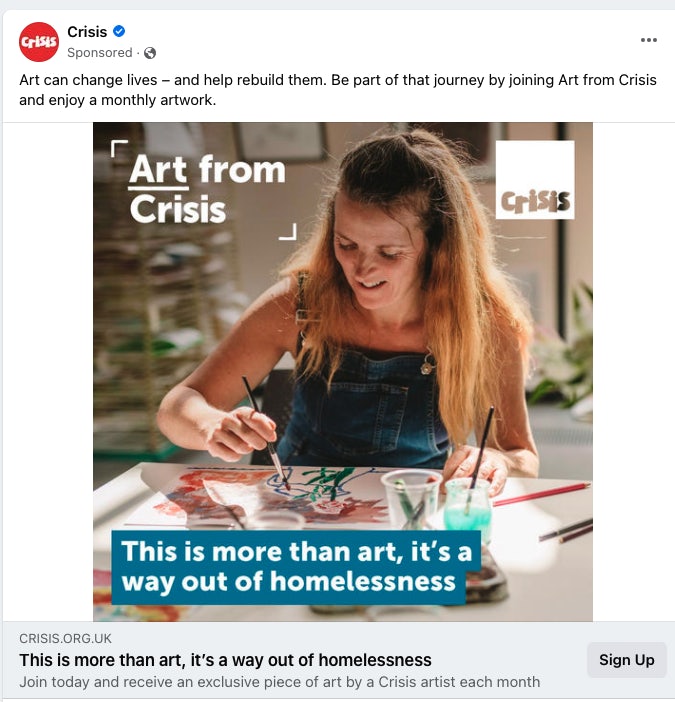Navigating the tightrope: Emotive ads, platform policies, and driving donations
Ever felt that sinking feeling when your powerful, heartfelt ad – the one you poured your soul into – gets rejected by an ad platform? You’re not alone. It’s a common tale in the charity sector: Ads with vital, emotive content, designed to stir compassion and drive donations, often fall foul of ever-evolving platform policies. The result? Wasted creative energy, missed opportunities, and that frustrating question: how do we tell our story without getting silenced by policy guidelines?
But here’s the good news: you don’t have to sacrifice creative impact for compliance. It’s a tightrope walk, but with the right approach, you can maintain that crucial emotional pull while playing by the rules. Think of us as your seasoned tightrope instructors, here to share our strategic secrets.
Traversing the policy maze: Meta vs. TikTok
Meta and TikTok, while both giants in the social media landscape, have varied approaches to sensitive content. Different platforms, different rules of engagement:

Meta’s policies, particularly concerning controversial content and sensitive social issues, can be quite broad. While Meta claims their policies aim to prevent exploitation and promote respectful discourse comprehensively, the main focus is often on factual accuracy and avoiding sensationalism, with strict guidelines around violence, hate speech, and even implied distress. Their algorithms can sometimes err on the side of caution, however, flagging content that depicts suffering or calls for action around sensitive political topics.
TikTok, on the other hand, with its younger audience and fast-paced, entertainment-driven format, often has an even lower tolerance for content that could be perceived as shocking or overtly political. Their community guidelines and advertising policies place a strong emphasis on maintaining a positive and safe environment, meaning content depicting tragedy, graphic imagery, or anything that could be seen as exploiting a crisis is likely to be swiftly moderated. It’s less about nuanced political discourse and more about preventing potentially upsetting content from appearing in users’ feeds.
Discover which paid social platform is right for your business.
Crafting impactful ads for smooth approval
So, how do we create ads that resonate deeply whilst reducing the risk of triggering in-platform disapproval? The key lies in a strategic blend of empathy, clever visual storytelling, and a strong understanding of platform nuances. Below are Impression’s three top strategy tips for reducing the risk of ad rejection:
- Focus on the Positive Impact: Instead of dwelling solely on the problem, shift the narrative to the positive changes your organisation facilitates. Showcase the hope, the recovery, and the lives transformed. For instance, rather than explicit imagery of suffering, consider visuals that imply need or show the positive outcome of aid. In our experience, positive messaging resonates more powerfully with audiences versus negative messaging – and is more likely to be approved by platforms.
- Subtlety is your Superpower: Direct, graphic depictions are almost always a no-go. Instead, opt for evocative imagery and metaphor. For instance, can an image of a child joyfully playing in a sunlit park convey hope without showing adversity? Definitely! Or think about a diverse group of people sharing a meal together to showcase community strength without directly illustrating issues of hunger.

This strategy works in tandem with focusing on the positive impact, meaning not only can you convey your message to audiences, they’re also more likely to emotionally connect with your cause.
- Lean into what you’re saying, not just showing: Stick with me on this one. Given TikTok’s visual-first, sound-on nature, use compelling voiceovers, uplifting music, and clear, concise text overlays to convey your message. Sometimes, what you say can be more impactful than what you show graphically.
Real-world wins: Our ‘test-and-learn’ approach
Informed by our partnerships with Cancer Research UK and a leading faith-based charity focused on urgent appeals such as the Gaza crisis, we’ve honed a robust ‘test-and-learn’ methodology.
For instance, with the faith-based charity facing challenges around urgent appeals, direct visual depictions of the crisis were consistently flagged. Our solution? We pivoted to showing the impact of the aid. Rather than focusing on the devastation, we created ads featuring resilient individuals receiving assistance or communities beginning to rebuild. The emotional pull remained, but the narrative shifted from graphic suffering to hopeful intervention.
Together with a powerful voiceover, supported with clear and concise captions, we have crafted a hardy, adaptable strategy which drives strong results for an incredibly ambitious client.



